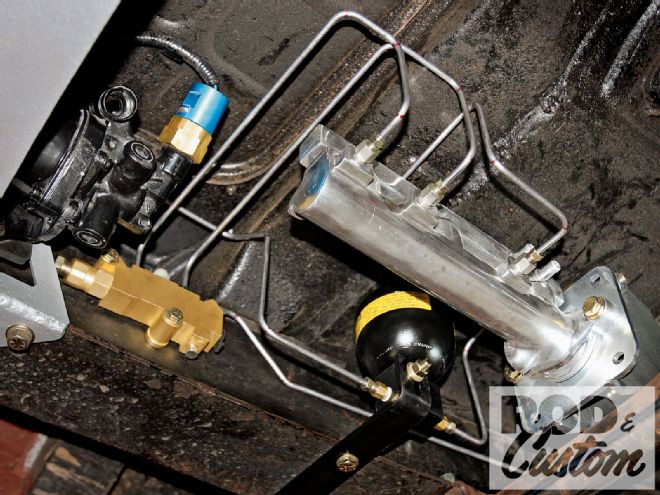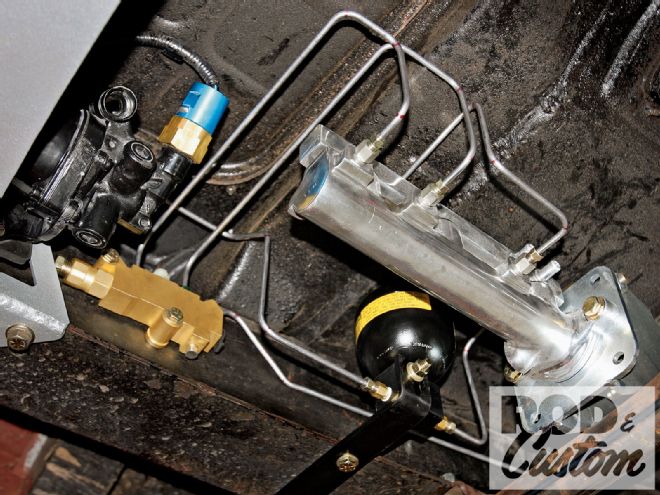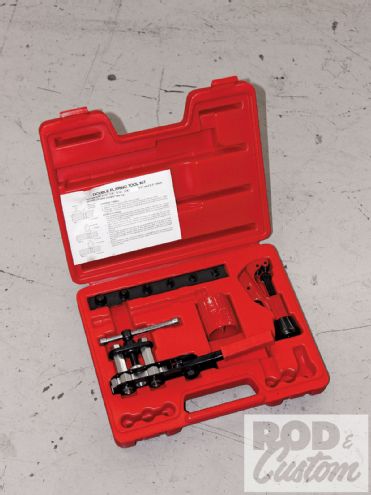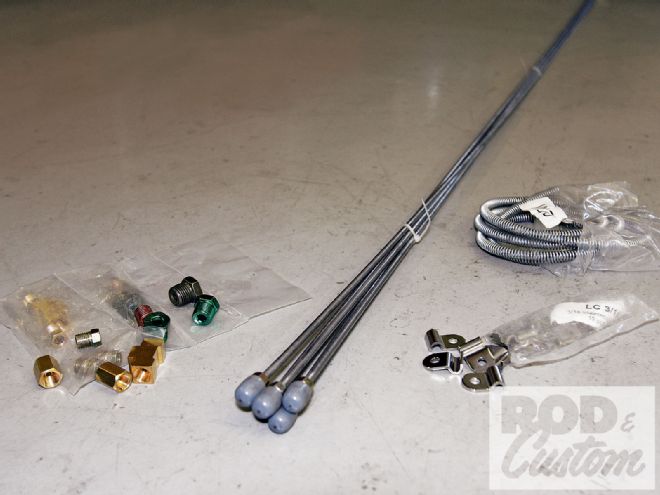
With all the major mechanical components installed in our '49 Chevy project Purple Pig, it's time to get down to all the little jobs that seemingly take forever in order to make the car road worthy. One of the larger of these "little" jobs is the time-consuming task of running brake lines. We already installed the ABS Power Brakes master cylinder (July '09 issue), and used a Straight Brake Line kit from Inline Tube to hook everything up. While Inline Tube offers pre-bent kits for many applications, they don't have patterns for every combination, and suggest using their Straight Line kits for custom setups like ours.

Of course making our own lines meant we had to cut, bend, and flare the brake tubing. Classic Performance Products (CPP), in addition to offering suspension and steering components, has a wide range of brake parts and systems, and sells a great Deluxe Dual Flare tool kit at a reasonable price, which we used for our installation. We also used a 16-inch stainless flexible rear brake hose from CPP to match the similar hoses that were supplied with our Chassis Engineering front suspension. With all our parts and tools gathered together, all that remained was to wait for a slot to use the Backyard Buddy rack at our Source Interlink Tech Center, get the Chevy up in the air, and start bendin' tube.
Before any bending could start though, once under the car we spent some time planning where we'd route the tubing. This is especially important in areas like the rear axle, where clearance for suspension components, as well as full suspension travel, comes into play. Keeping the brake lines away from the exhaust is also important, as well as planning where the exhaust will run if you're like us and haven't fitted the system yet. At the front, we re-installed the steering shafts and U-joints that we'd removed when we filled and painted the firewall, in order to ensure we routed the brake lines well away from the rotating shafts. Again, pre-planning where the exhausts would run from the headers meant we could plan the brake plumbing route.
 Here's the double flaring tool kit we got from Classic Performance Products. We already had a basic flaring tool that is clamped in a vise and seems to need three hands to make it work, so this handheld version was a revelation. It's not foolproof though, as its ease of operation can cause concentration lapses!
Here's the double flaring tool kit we got from Classic Performance Products. We already had a basic flaring tool that is clamped in a vise and seems to need three hands to make it work, so this handheld version was a revelation. It's not foolproof though, as its ease of operation can cause concentration lapses!
If you've never flared brake tubing before, we'd suggest reading the instructions and making a few practice flares before tackling your lines, though the CCP flaring tool was simple to use. Work slowly and methodically, and once you get your head around how to bend the tube, and don't bend it the wrong way on long lines with many bends (believe us, it's very easy to do if you're not concentrating), forming perfectly fitting lines can be very satisfying.
 Inline Tube supplied this steel, straight brake line kit, shipped in a tube, as it includes four 6-foot straight lengths, complete with fittings, and 45-degree double flared ends already formed. The steel tubing is coated with a tin/galvanized rust protection, just like the OEM original. Also included are spring wrap, stainless line clamps, inverted flare unions, T unions, and proportioning valve fittings. The straight tube meant we didn't have to straighten a coil of tubing, and we found no lines on our Chevy would be longer than 6 feet anyway.
Inline Tube supplied this steel, straight brake line kit, shipped in a tube, as it includes four 6-foot straight lengths, complete with fittings, and 45-degree double flared ends already formed. The steel tubing is coated with a tin/galvanized rust protection, just like the OEM original. Also included are spring wrap, stainless line clamps, inverted flare unions, T unions, and proportioning valve fittings. The straight tube meant we didn't have to straighten a coil of tubing, and we found no lines on our Chevy would be longer than 6 feet anyway.